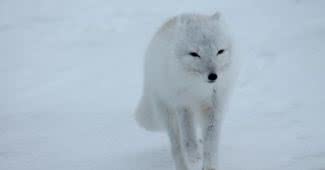Several animals possess breathtaking and unique natural colors. Some of these creatures utilize their bright-colored fur and feathers to blend in with their surroundings as camouflage to avoid predators. Meanwhile, others use their vibrant hues as a warning signal to predators, signifying that they are toxic and unsafe to eat. Here is a list of the top 10 most colorful animals on Earth.
10Blue Dart Frog
Dart frogs have long, sticky tongues that they use to eat many kinds of small insects like fruit flies, termites, ants, and tiny beetles, which is what makes them poisonous. The golden dart frog is the most lethal of the family, possessing enough venom to kill up to 10 grown men.
9Lilac Breasted Roller
Their preferred habitats are open woodland and savanna, where they can perch on tree tops to spot their prey that are moving on the ground. Lilac-breasted rollers are monogamous birds that mate for life and protect their nests by flying in a rolling pattern to distract intruders with their striking body color patterns.
7 Amazing Color-changing Animals In The World.
8Panther Chameleon
Panther chameleons can vary their color in just 20 seconds thanks to special cells underneath their outer body layer that can change their body color based on their environment. Some scientists also believe that chameleons change their colors due to variations in temperature and mood.
7Clown Fish
Clownfish have a unique symbiotic relationship with anemone. The anemone provides protection from predators and food scraps for the clownfish. In contrast, the clownfish uses its bright colors to attract other fish into the anemone, thus providing food for the anemone. Additionally, the clownfish fertilizes the anemone with its feces.
6Love Birds
They form deep bonds with their partners, which means they may not interact with people as often as they focus on each other. Females can be protective of their territories. The peach-faced lovebird is the most popular type, identifiable by a rainbow of colors such as yellow, green, and blue on their bodies.
5Toucan
These large, colorful bills can be up to four times the size of the toucan’s head and are used to reach food on branches and inside tree cavities. Despite their size, the bills are very lightweight and cannot be used for drilling wood. Interestingly, toucans also use their bills to regulate their body temperature in all weather conditions. In addition to foraging for food, toucans use their bills to attract mates and deter predators.
4Mandarin Fish
These fish also have a ceremonial dance after sunset as part of their mating process. Females gather at the reef and choose a mate based on size and strength, with larger and stronger males being more likely to be selected. The Mandarin fish’s coloration is not to attract a mate. Instead, it misleads predators into thinking they may be toxic to consume.
3Scarlet Macaw
These social and intelligent birds have an impressive bill perfectly adapted to crack open hard nuts in the rainforest. They gather in large, noisy groups and prefer to live in deciduous trees near rivers. Scarlet macaws can consume fruits that are toxic enough to kill other animals, but they balance it out by eating significant amounts of clay, which neutralizes the harmful toxins.
2Mandarin Duck
After mating, the male mandarin duck molts its feathers but does not return to its colorful glory immediately. Instead, it molts into brown and gray feathers to resemble its female counterparts while retaining its red beak. Mandarin ducks are social creatures and live in large flocks. It is also fascinating to note that, unlike other birds, mandarin ducks form a bond with their mate for life.
Related Articles
1Pheasant
Did you know that pheasants are considered the most colorful birds in the world? With 35 different species, male pheasants boast brilliantly colored feathers and an attractive long tail, ranging in colors such as golden, brown, purple, green, and white. Their heads come in red and have a beautiful crest. In contrast, female pheasants are paler in color than males.
Pheasants primarily eat seeds, berries, leaves, and insects and roost in trees, forming flocks in winter. Males produce loud, sharp calls that can be heard before the bird appears. During the breeding season, one male may mate with many females, who then raise the babies alone.




